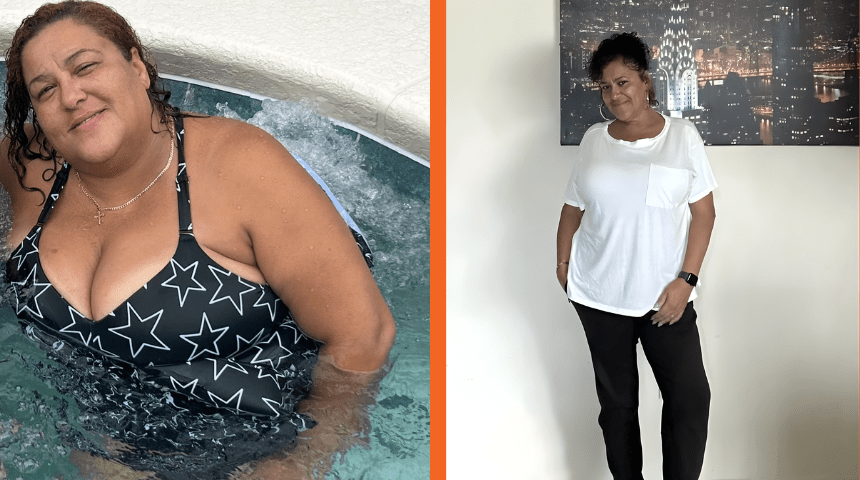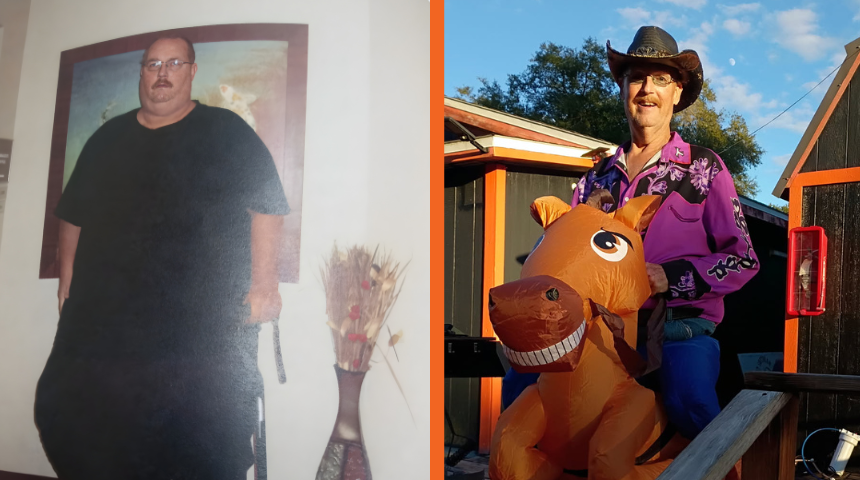From IVF to Surgery: Mom’s Journey To Save Her Babies
By Mary Frances Emmons, Editorial Contributor
Kristi Jacobsen knew all about multiples. Her first pregnancy was fraternal twins, then she and her husband, Keith, had two more girls, all four “IVF miracles,” Kristi says.
So when the time came to implant their last two embryos, the Jacobsens had a pretty good idea what to expect. “We had been through so many IVF cycles -- years and years,” Kristi says. Some just didn’t take. Two rounds ended in miscarriages. Doctors warned them these embryos were not the strongest. “I wasn’t really concerned about a miscarriage or another multiple pregnancy,” she says. “We weren’t sure if even one of the embryos would take.”
And then they got the shock of their lives.
‘A Very Big Surprise’
When the Jacobsens learned at the end of 2022 that both embryos had implanted and one had split, “it was a very big surprise,” says Kristi, then 38. Suddenly, the Vero Beach family of six was expecting triplets: a boy and identical twin girls.
Right away, doctors in Vero told Kristi she would need a higher level of care than they could provide. Friends recommended Dr. Gregory Locksmith, managing physician at Orlando Health Women’s Institute Center for Maternal-Fetal Medicine.

At their first appointment, Dr. Locksmith suggested a different course. There was a new doctor on staff, Dr. Emanuel Vlastos, director of the Orlando Health Women’s Institute Fetal Care Center, who had particular expertise with multiples and fetal surgeries. “If an issue should arise,” Dr. Locksmith told them, “he would be the best one for you.”
From their first meeting, Dr. Vlastos put the Jacobsens at ease. They were charmed by his habit of picking up pen and paper to illustrate his points. “He was so calm and confident,” Kristi recalls. “It was like talking with a family member.”
Little did the Jacobsens know how soon they would need that support.
When Twin-to-Twin Transfusion Syndrome Strikes
“Triplets come in all flavors,” Dr. Vlastos explains. “You can have three single pregnancies that are all in the uterus together. You could have two babies that are identical twins that share a placenta, with a third baby in the uterus, too. Even more rarely, you could have all three babies with one placenta.” Kristi’s case was a set of identical twins sharing a placenta, along with a third baby in utero.
Very quickly, Dr. Vlastos noticed that one of the twins was measuring a bit small, and her fluids, while within limits, were at the lowest tolerable level. It appeared the girls might be developing twin-to-twin transfusion syndrome, an unequal sharing of blood and nutrients between fetuses. Untreated, TTTS can lead to issues from pre-term delivery to malnutrition, organ damage or death. Twins who survive can have developmental delays, cerebral palsy or brain damage.
“I don’t think I really understood the magnitude of the situation,” Kristi says, “but I knew it wasn’t good.”
Dr. Vlastos got out his pen and started drawing, showing the couple how the girls were connected. Ninety percent of the time, each twin gives and receives blood in equal amounts. “It’s in balance,” Dr. Vlastos says.
With TTTS, which occurs in 10 percent to 15 percent of twins, it’s not. One of the Jacobsens’ girls was getting too little blood, and the other too much.
Life-Saving Surgery
The fix for TTTS is surgery to sever those connections. Kristi was only 17 weeks into her pregnancy — sustaining it more than 10 weeks after surgery was statistically unlikely, meaning the twins could come dangerously early. All agreed Kristi would come back in a couple of days for more assessment.
I don’t think I really understood the magnitude of the situation, but I knew it wasn’t good. - Kristi Jacobsen
By that point, Dr. Vlastos’ suspicions were confirmed. In order to save Kristi’s twins, he must sever the communicating blood vessels through a minimally invasive surgery called fetoscopic selective laser photocoagulation.
“You place a scope inside the sac of the bigger baby and find where the vessels are grown together,” Dr. Vlastos says. “Then you slide in a teeny, tiny laser fiber — one-fiftieth of an inch in diameter — and burn the vessels so they’re separated.”
“It’s really crazy because I was awake during surgery,” Kristi recalls. “I actually had a little monitor beside me where I could see everything going on internally.” She was able to watch as Dr. Vlastos and his team severed the connection and put her girls back on track. But Kristi and her babies weren’t out of the woods yet.
Kristi knew that every day she carried the triplets would mean less time for them in Orlando Health’s Neonatal Intensive Care Unit. While such units are life-savers, prolonged stays are not without consequence — premature babies can be at risk for everything from sepsis to mental health problems later in life, and Kristi was determined to carry as long as possible. “Prepare to get humongous!” Dr. Vlastos cheerfully told her not long after surgery.
He wasn’t kidding. By only 28 or 30 weeks, she had reached her size at her first twins’ delivery. When she and Keith went out to lunch after one appointment with Dr. Vlastos, their fellow diners expressed concern, believing Kristi surely must be about to go into labor any second. “The babies took a lot out of me,” she says. “But I just kept growing, and they did, too.”
Beating the Odds at Nearly 35 Weeks
Until they didn’t. Always small, by 33 weeks both twins’ growth had slowed. The time had come.

Kristi cried. “I’m not ready,” she begged, “and they’re not ready.” Could she be admitted to the hospital and monitored there, to gain even a little more time? Dr. Vlastos agreed, and she made it 12 more days, to a just under 35 weeks.
Delivery was a bit of a party. “I think there were 30 people in the OR, ready to receive the babies,” she says. “It was a crazy experience; I was so thankful for that extra time at Winnie Palmer.”
But it had all been worth it: Their weight was more than 4 pounds, with the boy well over 5, right on target. He needed a little oxygen, but otherwise none of the babies spent more than a week in the NICU.
“Having Dr. Vlastos and the other doctors take care of me while I took care of the babies made me really secure,” Kristi says. “I knew we were doing the best we could to keep them safe until they came into the world.”
Thriving and Happy
Today, Kennedy, Kaydence and their brother Kamden all are normal, healthy kids, with no complications from TTTS, surgery or their slightly early delivery.
“The triplets just had their 2nd birthday, and like all toddlers they’re extremely active and literally driving their parents crazy, I’m sure,” Dr. Vlastos says with a laugh. “There’s nothing better than to see little people who were in grave danger alive and well and with their families. That gets you as a parent, because that's what we all want for our kids.”
The Jacobsens’ house – and hearts -- are full with the triplets, boy-and-girl twins Kailey and Kyler, 12, and girls Kinsley, 8, and Kassidy, 5.
“There was a day before we had any of our babies that we were told we’d never have children,” Kristi says. “So this has been quite a journey, and full of blessings.”




